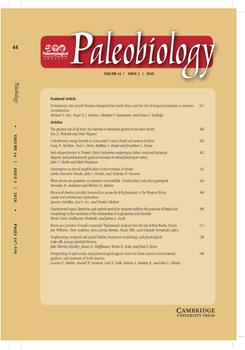Ecophenotypic variation in populations is driven by differences in environmental variables. In marine environments, ecophenotypic variation may be caused by differences in hydrodynamic conditions, substrate type, water depth, temperature, salinity, oxygen concentration, and habitat heterogeneity, among others. Instances of ecophenotypic variation in modern and fossil settings are common, but little is known about the influences of time averaging and spatial averaging on their preservation. Here we examine the shell morphology of two adjacent populations, both live collected and death assemblages, of the infaunal, suspension-feeding, intertidal bivalve Leukoma staminea from the well-studied Argyle Creek and Argyle Lagoon locations on San Juan Island, Washington. Individuals in the low-energy lagoon are free to burrow in the fine-grained substrate, while clams in the high-energy creek are precluded from burrowing in the rocky channel. Our results demonstrate variation in size and shape between the adjacent habitats. Lagoon clams are larger, more disk-shaped, and have relatively larger siphons than their creek counterparts, which are smaller, more spherical in shape, and have a relatively shallower pallial sinus. This ecophenotypy is preserved among death assemblages, although with generally greater variation due to time averaging and shell transport. Our interpretation is that ecophenotypic variation, in this case, is induced by differing hydrodynamic regimes and substrate types, cumulatively resulting in physiological trade-offs diverting resources from feeding and respiration to stability and shell strength, all of which have the potential to be preserved in the fossil record.
How to translate text using browser tools
30 May 2018
Ecophenotypy, temporal and spatial fidelity, functional morphology, and physiological trade-offs among intertidal bivalves
John Warren Huntley,
James D. Schiffbauer,
Teresa D. Avila,
Jesse S. Broce
ACCESS THE FULL ARTICLE

Paleobiology
Vol. 44 • No. 3
Summer 2018
Vol. 44 • No. 3
Summer 2018




